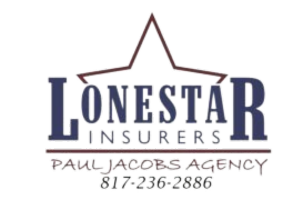If you rent a home or own valuable belongings, understanding personal property insurance is essential to protect your assets. This coverage is a cornerstone of renters and homeowners policies, but many people are unsure what it includes or how it works. In this blog, we’ll explain what personal property insurance covers, how it differs from rental property insurance, and tips to find the best property insurance for your needs.
What Is Personal Property Insurance?
Personal property insurance covers the cost of repairing or replacing your belongings if they’re damaged, destroyed, or stolen due to covered events (called “perils”). This includes items like:
- Furniture, electronics, and appliances
- Clothing, jewelry, and sports equipment
- Kitchenware, tools, and decor
Whether you’re a renter or homeowner, this coverage applies to items you own, not the structure itself. For example, renters insurance covers damage to property like a stolen laptop or a couch ruined by a burst pipe, but it won’t pay to fix the building’s roof—that’s the landlord’s responsibility under insurance for rental property.
Protect your belongings today! Get a free renters insurance quote to secure your peace of mind.
What Does Personal Property Insurance Cover?
Most policies protect against common risks, including:
- Theft: If someone breaks into your home and steals valuables
- Fire/Smoke: Damage from house fires or wildfires
- Water Damage: Burst pipes, appliance leaks, or storm-related flooding (if specified)
- Vandalism: Intentional destruction of your property
- Wind/Hail: Storm damage to belongings
However, coverage limits apply. High-value items like fine art, heirlooms, or expensive electronics may require additional “scheduled personal property” coverage.
Don’t risk losing your valuables! Schedule a consultation to add coverage for your high-value items.
What’s Not Covered?
Personal property insurance has exclusions, such as:
- Floods/Earthquakes: Requires separate policies
- Normal Wear and Tear: Damage from aging or poor maintenance
- Intentional Damage: If you destroy your own items
- Business Equipment: Items used for work may need commercial coverage
Always review your policy to avoid surprises. Need help understanding your policy? Contact an insurance expert for a free review.
Renters Insurance vs. Rental Property Insurance: Key Differences
Confusion often arises between rental property insurance (for landlords) and personal property insurance (for tenants):
- Renters Insurance: Covers a tenant’s belongings and liability
- Rental Property Insurance: Protects landlords’ buildings and liability (e.g., if a tenant sues for injury on the premises)
If you’re a renter, renters insurance covers damage to property you own, while landlords use insurance for rental property to safeguard the structure and their financial interests.
Landlords, safeguard your investment! Explore rental property insurance options tailored to your needs.
How Much Coverage Do You Need?
To determine your coverage limit:
- Take Inventory: List all belongings and estimate their value
- Choose Actual Cash Value (ACV) or Replacement Cost:
- ACV: Pays the item’s current value (depreciated)
- Replacement Cost: Pays to buy a new equivalent (more expensive but comprehensive)
- Consider High-Value Items: Add riders for jewelry, collectibles, etc.
Most renters policies start at $15,000–$30,000 in personal property coverage.
Start your inventory now! Download our free inventory checklist to calculate your coverage needs.
Does Renters Insurance Cover Roommates?
Generally, no. Unless explicitly added to the policy, roommates’ belongings aren’t covered. Encourage them to get separate renters insurance.
Roommates, don’t share the risk! Get your own renters insurance quote in minutes.
Tips to Find the Best Property Insurance
Whether you need personal property insurance or insurance for rental property, follow these steps:
- Compare Quotes: Use online tools to check rates from providers like State Farm, Allstate, and Lemonade
- Bundle Policies: Save by combining renters and auto insurance
- Ask About Discounts: Safe-building materials, security systems, or claim-free history
- Read Reviews: Look for insurers with strong customer service ratings
- Adjust Deductibles: Higher deductibles lower premiums but increase out-of-pocket costs during claims
For landlords, rental property insurance costs vary based on location, property type, and coverage limits.
Find the best deal! Compare top insurance providers and save on your policy today.
When to Update Your Policy
Review your coverage annually or after major life changes, such as:
- Buying expensive electronics or jewelry
- Moving to a high-risk area (e.g., flood zones)
- Starting a home-based business
Stay protected through life’s changes! Schedule a policy review to ensure your coverage is up to date.
Final Thoughts
Personal property insurance is a lifeline for protecting your belongings against theft, disasters, and accidents. For renters, it’s often affordable (as low as $15/month) and included in renters insurance policies. Landlords, meanwhile, should prioritize rental property insurance to shield their investments.
To find the best property insurance, assess your needs, compare options, and ensure your policy’s limits reflect the true value of your assets. Don’t wait for a crisis—secure your peace of mind today.
Get started with a free insurance quote and protect what matters most.



